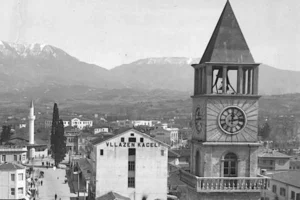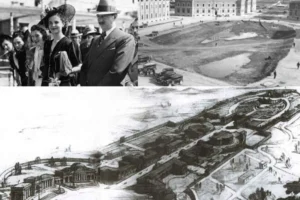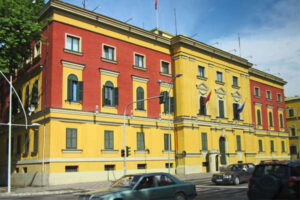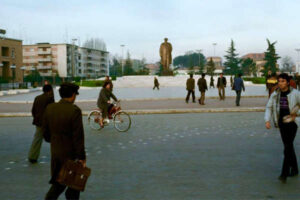
Good to know
Origin of Name
City foundation (Ottoman impact)
Modern Tirana was founded in 1614 by Sulejman Bargjini Pasha, a local ruler from Mullet who constructed a mosque, a bakery and a hamam (Turkish sauna). The city began to grow at the beginning of the 18th century but it remained an unimportant town until it was proclaimed Albania’s capital in 1920. The choice was made due to its central geographical position in the country, on the fault-line between the northern Ghegs and the southern Tosks. It wasn’t until the late 1920s when, under Italian influence, the centre of the city took on the appearance of a capital city.

Monarchy
On 8 February 1920, the Congress of Lushnjë proclaimed Tirana as the temporary capital of Albania, which had gained independence in 1912. In 1923, the first regulatory city plan was compiled by Austrian architects. Then the construction in Central Tirana was part of the cooperation package between King Zog of Albania and Fascist Italy. Ahmet Zog was the leader of Albania from 1922 to 1939. He first served as Prime Minister (1922–1924), then as President (1925–1928), and finally as King (1928–1939). The centre of Tirana was the project of Florestano di Fausto and Armando Brasini well known architects of the Benito Musoloni period in Italy.
Brasini laid the basis for the modern-day arrangement of the ministerial buildings in the city centre. The plan underwent revisions by Albanian architect Eshref Frashëri, Italian architect Castellani and Austrian architects Weiss and Kohler. Modern Albanian parliamentary building served as a club of officers. It was there that, in September 1928, Zog of Albania was crowned King Zog I, King of the Albanians.

Italian architecture
Well-known architects of the Mussolini period in Italy, Florestano de Fausto and Armando Brasini, were the masterminds behind the construction of the main square, which today bears the name of the Albanian National Hero Skanderbeg, the huge boulevard, ministry buildings, national bank, the town hall and the Palace of Brigades (former royal palace, today the presidential palace). In 1939, Tirana was captured by Fascist forces that appointed a puppet government. The Italian architect Gherardo Bosio was asked to elaborate on previous plans and introduce a new project for the area of the present-day Mother Teresa Square. By the early 1940s, the southern end of the main boulevard and the surrounding buildings were finished and renamed with Fascist names.

Communist style
From 1944 to 1991, the city experienced ordered development but with a decline in architectural quality. Massive socialist-style apartment complexes and factories began to be built, while Skanderbeg Square was redesigned, with a number of buildings being demolished. For instance, Tirana’s former Old Bazaar and the Orthodox Cathedral were razed to the ground for the erection of the Soviet-style Palace of Culture. The Italian-built municipal building was detonated and the National History Museum was constructed in its place, while the structure housing the Parliament of Albania during the period of monarchy was turned into a children’s theatre (Puppet Theatre today). The northern end of the main boulevard was renamed Stalin Boulevard and a statue of the Soviet leader erected in the city square. As private car ownership was banned, transport for the masses consisted mainly of bicycles, trucks and buses. After Hoxha’s death, a pyramidal mausoleum was constructed in his memory by the government. Now, it is known as the Pyramid, but has little to do with Enver Hoxha, having been turned in a cultural centre of Tirana.

Modern Tirana
Today, Tirana is the centre of the political, economic, and cultural life of the country with about 1,000,000 inhabitants. In the last few years the city has seen substantial changes in its appearance. The dull communist-style apartment blocks have been painted over in bright colours with abstract patterns by an artist turned mayor (Edi Rama, the current prime minster). This is not only a quick fix but also an uplifting experience for inhabitants and visitors alike. Furthermore, Tirana has seen improvements in its development with modern infrastructure, contributing to the city’s metropolitan look. Tirana is changing day by day. The Skanderbeg square is newly restored and was inaugurated on 10 June 2017.
